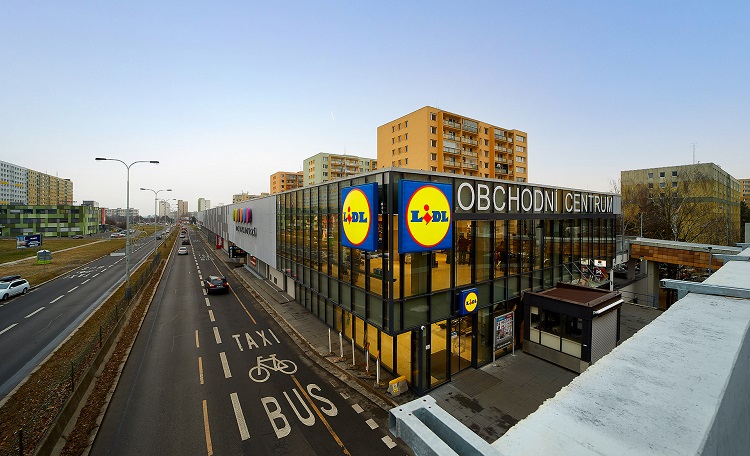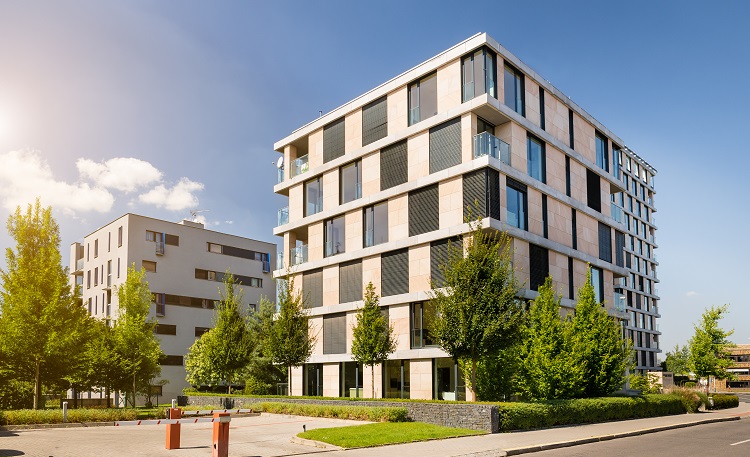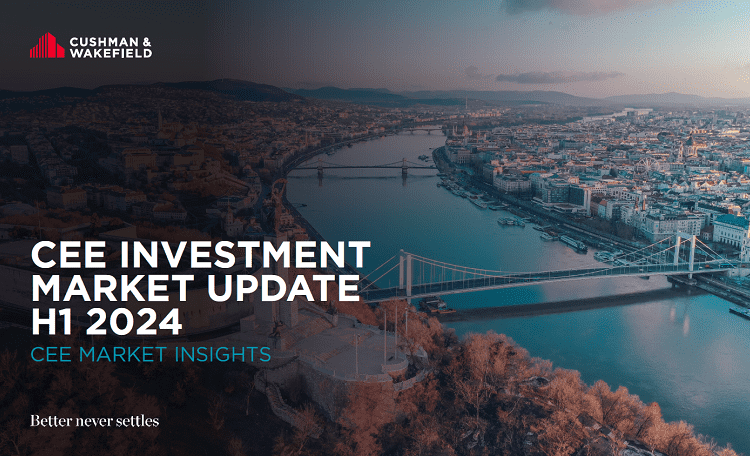In 2023, Central Europe’s1 commercial real estate market faced a notable decline in investment volumes. Dropping by 55% year on year, the region’s total investment volume accounted for EUR 5.02 billion. Of the six countries surveyed, Poland experienced the most significant downturn of 68%, with its share on the total CEE volume also dropping. The highest proportion of the capital went into the office sector, which also recorded the sharpest outward movement in terms of yields. Local and regional investors accounted for two thirds of the investment transaction volumes, a significant increase from the previous years. Despite challenges, the market demonstrates resilience, particularly in the logistics and residential sectors, spotlighting areas of growth potential. The latest market development is provided by the Cushman & Wakefiled report CEE Investment Market Outlook 2024.
In the country comparison, Poland has in the long term accounted for the highest share of the capital invested in the region. The same was true in 2023, but from attracting half of it or more in the preceding years, the share dropped to roughly a third of the overall volume. The Czech Republic in the second place accounted for ca a quarter.
As usual, the largest part of the CEE investment volume went to office properties, although their share dropped from 41% in 2022 to 32% in 2023. The industrial and retail sectors remained at nearly equal levels, both slightly exceeding 27%, and basically the same as the year before (26%).

Prime yields: Resilience amidst economic shifts?
Jeff Alson, Head of Capital Markets CEE, Cushman & Wakefield: “Overall, the Central European commercial real estate market witnessed a pronounced dip in investment volumes, led by Poland which registered the steepest fall, indicative of investors’ heightened caution amidst economic uncertainties. This decline is however contrasted by the nuanced behaviour of prime yields across the region, which showed resilience amidst economic shifts.”
Despite the contraction in volumes, prime yields exhibited a mixed pattern: while some markets saw a slight increase, reflecting investor demand for premium, risk-averse assets – others remained stable, underscoring the underlying resilience and ongoing appeal of prime commercial real estate in Central Europe. Sector-wise, prime yields have been increasing since the beginning of 2022 across all asset classes. The sharpest outward movement has been recorded in offices, while yields of industrial properties grow with the lowest speed in CEE.
Jeff Alson, Head of Capital Markets CEE, Cushman & Wakefield: “In general, there is little visibility on real prices. Evidently, prices have not bounced back enough to satisfy sellers, and buyers have not adjusted to the new pricing. Hence the low investment activity.”
Office, retail and industrial share was almost equal
Diverse trends were observed on Central Europe’s commercial property market in 2023. The logistics and industrial sectors performed well, influenced by changes in supply chain tactics and a complex e-commerce environment. Despite an e-commerce surge, demand from its tenants decreased, indicating a move towards stability.
Conversely, the office sector encountered difficulties as a result of the increasing trend towards remote work and businesses seeking the most effective workplace approaches. The retail sector demonstrated resilience, showing robust sales across CEE and also attracting significant investment volumes.
Jeff Alson, Head of Capital Markets CEE, Cushman & Wakefield: “Prior to 2023, the office and industrial sectors were dominating the investments. However, in 2023, the investment volumes saw an almost equal share among the three main sectors: office, retail, and industrial.”

The rise of local investment
In 2023, Central Europe’s commercial real estate market saw a significant shift in the source of capital, with a marked increase in local investment share amidst a decrease in Western capital inflow.
Local investors and those from CEE accounted for the majority (65%) of investment transactions in the region in 2023, which is significantly higher share than in the previous years (42% in 2022 and 37% in 2021). Investors originating from the Czech Republic were behind 37% of the investment volume, and there were almost no acquisitions by Asian or German investors.
Jeff Alson, Head of Capital Markets CEE, Cushman & Wakefield: “This transition reflects a broader trend of regional investors playing a more pivotal role in sustaining market liquidity and driving investments. The changing landscape underscores the need for a strategic approach to capital sourcing, emphasizing the growing importance of local and regional investors in navigating the current economic environment and leveraging their market familiarity to identify viable investment opportunities.”
Anticipating recovery and strategic growth
Looking ahead, the investment volumes in Central Europe's commercial real estate market over the next few years are poised for a cautious yet potentially steady recovery. The investment volume is expected to gradually increase by 10 to 15% annually, this outlook being contingent on the stabilization of the global economic environment and the continued adaptation to post-pandemic market conditions.
The market is unlikely to see a quick recovery in pricing that satisfies both sellers and buyers. Additionally, the possibility of de-leveraging requirements leading to a scarcity of new equity for existing deals or reinvestments could result in more forced sales, adding to the market's challenges.
Local capital is set to play a pivotal role in the continued development of investment activities within the region, serving to mitigate the impact of the withdrawal of international capital. Nevertheless, it is anticipated that international capital will ultimately resume its inflow, reinforcing the region's investment landscape.
Jeff Alson, Head of Capital Markets CEE, Cushman & Wakefield: “Despite a traditionally stable investment environment in the CEE region, there is currently a gap of three to five billion euros in the gross investment volume compared to the historical averages. This deficit is projected to be offset by a steady return of international capital and a consistent increase in local investment, supplemented by a healthy but more selective debt market. Over the coming years, this is expected to recover and eventually increase long-term averages.”
To download the report please visit CEE Investment Market Outlook 2024.
1 The CEE region includes Bulgaria, the Czech Republic, Hungary, Poland, Romania and Slovakia for the purpose of this comparison.


















